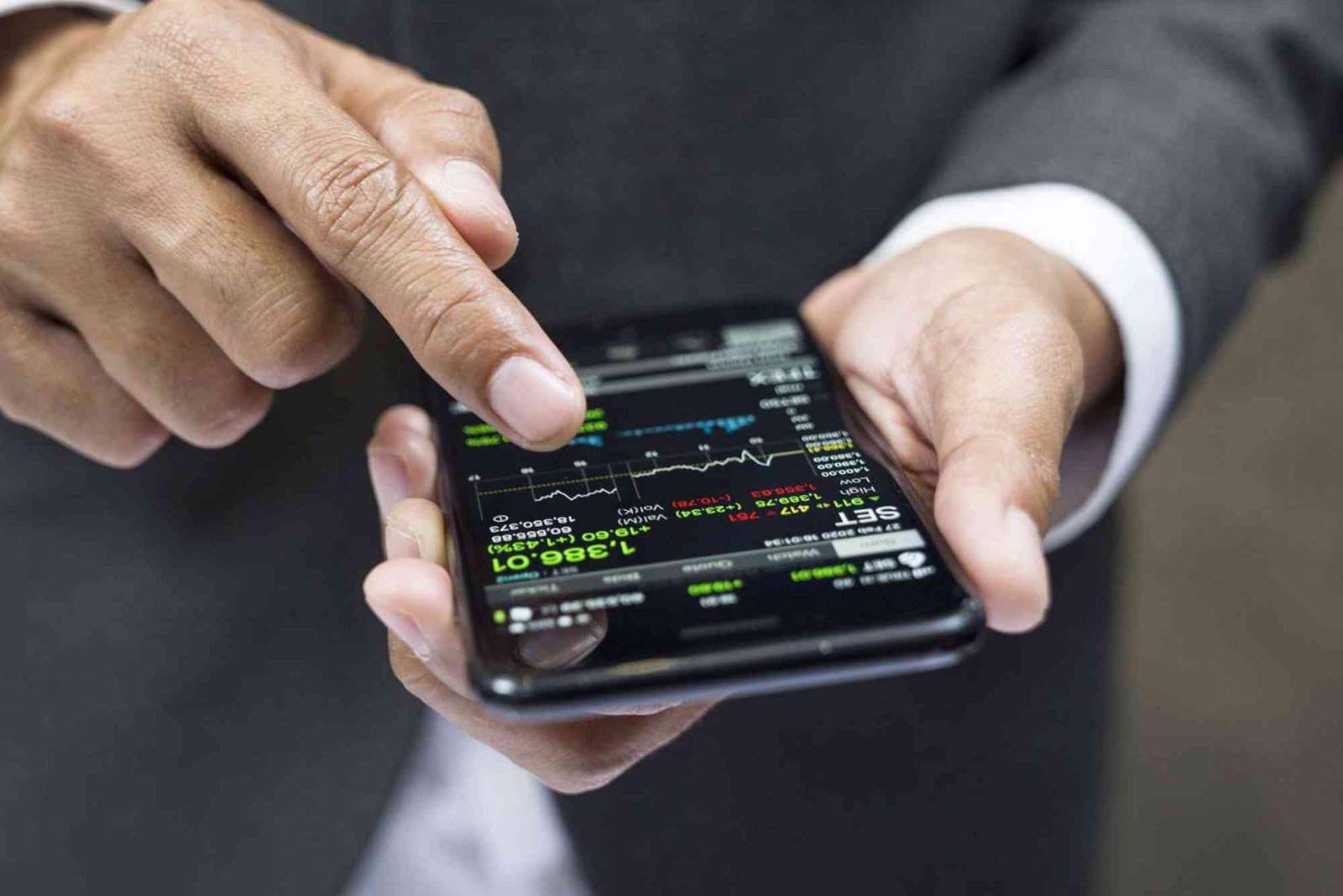Introduction
Cryptocurrency trading has become one of the most exciting financial opportunities of the 21st century. With millions of new investors entering the crypto market every year, learning how to trade digital assets like Bitcoin, Ethereum, and other altcoins can be both rewarding and challenging. This comprehensive guide on cryptocurrency trading for beginners will help you understand the basics, strategies, tools, and tips to start your trading journey successfully.
Understanding Cryptocurrency Trading
Cryptocurrency trading involves buying and selling digital currencies to make a profit. Traders speculate on price movements, just like in the stock or forex markets. The main goal is to buy low and sell high, but successful trading requires more than luck — it needs knowledge, patience, and a clear strategy.
Cryptocurrencies operate on blockchain technology, which ensures security, decentralization, and transparency. Unlike traditional currencies, digital assets aren’t controlled by banks or governments, making them an independent and global financial instrument.
Why You Should Learn Cryptocurrency Trading
Learning cryptocurrency trading provides financial flexibility and potential for profit in a fast-evolving market. Unlike traditional markets that close after certain hours, crypto markets operate 24/7, allowing you to trade anytime, anywhere. This accessibility is ideal for beginners looking to learn at their own pace.
Moreover, with the rise of educational resources, tutorials, and platforms such as How To Learn Cryptocurrency Trading, mastering the basics has never been easier. Whether you aim to trade part-time or professionally, understanding this digital economy gives you a significant edge in the modern financial world.
How Cryptocurrency Trading Works
Trading cryptocurrencies is simple in theory but requires discipline in practice. It starts with creating an account on a reputable crypto exchange, funding your wallet, and analyzing market trends before placing trades. Let’s break down the process.
Choose a Reliable Crypto Exchange
A crypto exchange acts as a marketplace where you can buy and sell cryptocurrencies. Platforms like Binance, Coinbase, and Kraken are well-known for their user-friendly interfaces and strong security features. When choosing an exchange, always check for regulation, fees, liquidity, and available trading pairs.
Create a Secure Wallet
Your wallet stores your digital assets. There are two main types:
-
Hot wallets, which are connected to the internet and suitable for frequent trading.
-
Cold wallets, which are offline and used for long-term storage.
Always enable two-factor authentication (2FA) and keep your private keys safe. Security should be your top priority in cryptocurrency trading.
Understand Market Analysis
Market analysis helps traders predict price movements. There are two types of analysis:
-
Technical Analysis (TA): Uses charts, indicators, and patterns to forecast trends.
-
Fundamental Analysis (FA): Evaluates a coin’s project, technology, team, and market adoption.
A good trader combines both methods to make informed decisions and reduce risks.
Start with Small Investments
Beginners should start with small amounts to test strategies and understand market behavior. The crypto market is volatile — prices can rise or fall rapidly within minutes. By starting small, you minimize risks while gaining experience.
Common Cryptocurrency Trading Strategies
There’s no one-size-fits-all approach in crypto trading. However, several proven strategies can guide beginners to success.
Day Trading
Day trading involves opening and closing positions within a single day to profit from short-term price movements. It requires attention, speed, and solid technical skills.
Swing Trading
Swing traders hold positions for several days or weeks, focusing on capturing mid-term market swings. This method suits traders who prefer a balanced approach between active and long-term trading.
Scalping
Scalping is a fast-paced strategy that focuses on small profits from multiple trades throughout the day. It demands high concentration and quick decision-making.
HODLing
“HODL” means “Hold On for Dear Life.” This strategy involves buying and holding cryptocurrencies for the long term, regardless of short-term volatility. It’s ideal for those who believe in the future potential of crypto assets.
Managing Risk in Cryptocurrency Trading
Risk management is crucial in trading. Even experienced traders face losses. The goal is not to eliminate risk but to manage it wisely.
Set Stop-Loss and Take-Profit Levels
A stop-loss automatically closes your trade when prices hit a certain loss point, protecting your capital. Take-profit levels help you lock in profits before the market reverses.
Diversify Your Portfolio
Never invest all your money in a single coin. Spread your investment across multiple assets to reduce potential losses if one coin performs poorly.
Avoid Emotional Trading
Fear and greed are two major factors that lead traders to make impulsive decisions. Stick to your strategy, use logic over emotion, and maintain a disciplined mindset.
Stay Updated
The crypto market moves fast. News about regulation, technology updates, or market sentiment can drastically affect prices. Following trusted sources and reading Related Cryptocurrency article can keep you informed and ahead of the curve.
Tools Every Beginner Should Use
To trade efficiently, beginners should use analytical tools and reliable platforms that simplify the process.
-
TradingView: For charting and analyzing technical indicators.
-
CoinMarketCap: To track cryptocurrency prices, volumes, and rankings.
-
Crypto News Aggregators: For real-time updates on global crypto events.
-
Portfolio Trackers: Apps like Delta or CoinStats help monitor your holdings.
These tools enhance your decision-making and ensure a data-driven approach to trading.
Mistakes to Avoid as a Beginner
Starting out in crypto trading can be overwhelming, and mistakes are common. Here are some you should avoid:
-
Investing without research: Always study the project behind a coin.
-
Overtrading: Trading too frequently increases fees and risks.
-
Ignoring security: Many traders lose assets due to poor wallet protection.
-
Following hype blindly: Never buy coins based on rumors or social media trends.
By avoiding these mistakes, you can develop a more stable and confident trading routine.
Tax and Legal Considerations
Cryptocurrency trading may be subject to taxes depending on your country’s regulations. Always track your transactions and profits. Using tax-reporting software can simplify compliance. Some governments require traders to declare crypto earnings as capital gains or income, so consult a financial expert for More details.
The Future of Cryptocurrency Trading
The future of cryptocurrency trading looks bright. As blockchain adoption grows, new investment opportunities are emerging through decentralized finance (DeFi), tokenized assets, and artificial intelligence-driven trading bots. Regulations are also becoming clearer, ensuring safer and more stable trading environments for investors.
With mainstream institutions like PayPal and major banks entering the crypto space, digital assets are no longer a niche market but an integral part of the global economy.
Cryptocurrency trading for beginners doesn’t have to be intimidating. By learning the fundamentals, practicing patience, and applying effective strategies, anyone can become a confident trader. The key lies in understanding market behavior, managing risks, and continuously improving through education and experience.
Whether you’re exploring crypto as a side investment or aiming for full-time trading, remember to stay disciplined and informed. If you’re ready to start your journey, visit How To Learn Cryptocurrency Trading and explore valuable insights to guide your next steps.
FAQs
1. How do I start trading cryptocurrency as a beginner?
Start by choosing a secure exchange, creating a wallet, learning basic market analysis, and beginning with small investments to build confidence.
2. Is cryptocurrency trading safe?
Yes, if you use reputable exchanges and follow security practices like 2FA and private key protection. However, remember that all investments carry risks.
3. How much money do I need to start trading crypto?
You can start with as little as $10 on most exchanges. The key is to trade what you can afford to lose while learning.
4. Can I make a living froe cryptocurrencies?
Since crypto markets operate 24/7, the best time depends on market volatility and your strategy. Many traders prefer high-volume hours when price movement is more active.
6. Is crypto trading legal?
In most countries, yes. But regulations vary, so check your local laws before trading.
7. Should I hold or trade my cryptocurrencies?
It depends on your goals. Holding suits long-term investors, while trading suits those seeking short-term profits. You can also do both strategically.








